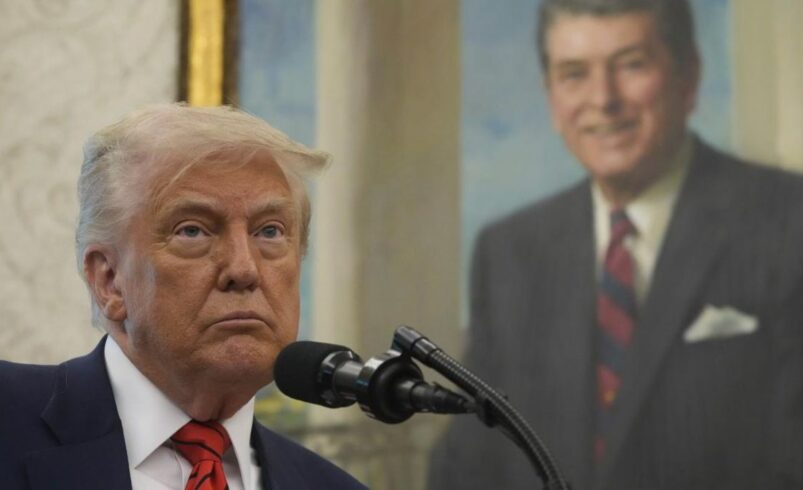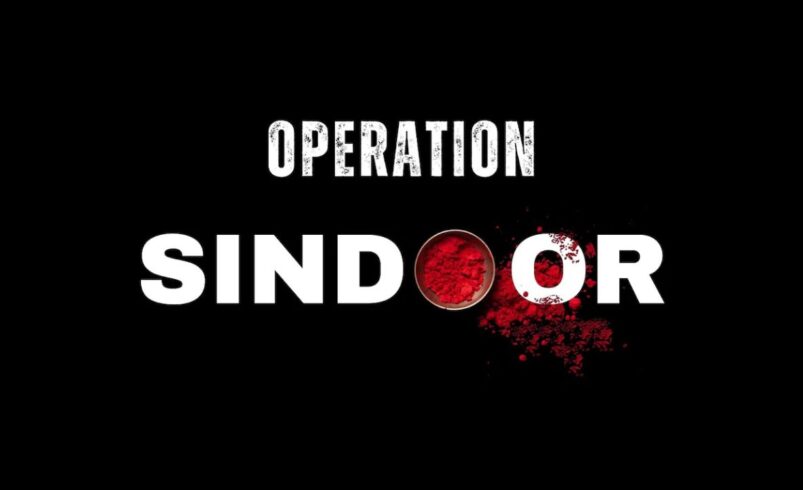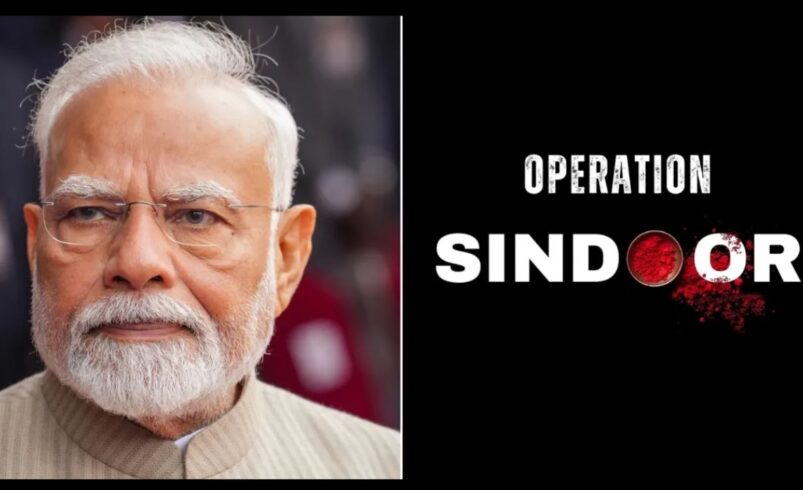On May 6, 2025, India initiated Operation Sindoor, a military offensive targeting nine terrorist infrastructure sites within Pakistan and Pakistan-occupied Kashmir (PoK). This high-intensity operation came in retaliation to the deadly terror attack in Pahalgam on April 22, which claimed 26 innocent lives. In a pre-dawn maneuver, India’s armed forces launched missile attacks, hitting locations including Bahawalpur, the known base of the Jaish-e-Mohammad terror outfit. According to India’s Defence Ministry, the mission was “focused, measured, and non-escalatory”, aimed strictly at neutralizing militant threats. The strikes also followed weeks of diplomatic and military tension between India and Pakistan, including disputes over Indus water sharing and airspace violations.
Trump Reacts: “It’s a Shame… Hope It Ends Quickly”
Former U.S. President Donald Trump offered a reserved reaction to the Indian military operation. Speaking to reporters, Trump described the situation as a “shame” and expressed hope that it would “end very quickly.” He acknowledged the long history of hostility between India and Pakistan and emphasized the need for restraint. Trump’s remarks were consistent with his earlier statements of maintaining close diplomatic ties with both New Delhi and Islamabad. However, critics pointed out the neutral tone of his comments at a time when India responded to a deadly act of terrorism on its soil. His reaction came shortly after India’s National Security Adviser (NSA) Ajit Doval briefed U.S. NSA and Secretary of State Marco Rubio, highlighting the operation’s objectives and limited scope.
Diplomatic Messaging: India Clarifies Objectives to the World
In an official press release, the Indian Embassy clarified that no Pakistani civilian, economic, or military targets were hit during the operation. The strikes were aimed solely at verified terror camps, signaling India’s intention to avoid escalation while asserting its right to self-defense. This messaging was reinforced by Defence Minister Rajnath Singh, who declared “Bharat Mata ki Jai” on social media, emphasizing national unity and pride in the armed forces. India’s diplomatic core worked swiftly to update global allies and prevent misinterpretations of the operation as an act of war, stressing that it was a “counter-terrorist precision strike.”
Ground Situation: Artillery Exchange Escalates Along the LoC
While the airstrikes made headlines, ground tensions also flared along the Line of Control (LoC). Reports confirmed intense artillery fire in sectors such as Uri and Tangdhar, signaling a possible retaliatory response from Pakistan. Eyewitnesses along the border reported early morning shelling, with both sides exchanging heavy fire. The Indian Army has heightened its alert across Jammu and Kashmir, and civilians near the LoC have been asked to take precautionary measures. Despite the Defense Ministry calling the operation “non-escalatory,” the on-ground exchange of fire suggests a volatile period ahead, raising concerns of broader military engagement.
Global Response and the Path Ahead
The international community has responded with measured concern, urging both nations to show restraint. The United Nations and multiple Western capitals are closely monitoring the situation, calling for de-escalation and dialogue. While the world acknowledges India’s right to defend its sovereignty, there is a growing fear that retaliatory measures by Pakistan could push South Asia toward a larger conflict. With nuclear capabilities on both sides, the stakes are dangerously high. As Operation Sindoor unfolds, diplomatic backchannels, including the U.S. and the UN, will play a critical role in preventing the region from descending into another military standoff.
Get the latest in business, markets, startups, and policy—visit businessnewsindia.in for in-depth updates and follow us on Instagram @businessnewsindia.in for daily bites of what matters most.
Source – financialexpress.com









